|
What should you expect from a Childrens Eye Exam?
Is your child having trouble seeing the board at school? Does your child have trouble reading as well as complain of headaches and/or eyestrain? Does it seem as if one of your child’s eyes turns in or out? Does your child get frequent Styes? Does your child complain of itchy eyes? Any of these reasons point to the need for an Eye Exam. If your child is an infant or toddler, the patient history will include questions about your pregnancy with your child and your child’s development such as: These questions are important because it gives your eye doctor an idea of your child’s developmental milestones. If your child is delayed developmentally, he or she may be at risk for learning disabilities and visual perception problems like dyslexia. Your eye doctor also wants to know if your child is using both eyes together, which impacts his or her potential depth perception. Good depth perception will be important in the future for playing sports and pursuing certain occupations such as pilot. If your infant rubs his or her eyes often, this may be an indication of poor vision. If you have an older child rubbing his or her eyes often, this may be an indication of Eye Allergies. Frequent Styes can point to a need for an eyeglasses prescription or if accompanied by chronic lid irritation can suggest Blepharitis. If you have an older child, you may want to share with your eye doctor how good a student he or she is, and whether vision is suspected as the cause of any problems.
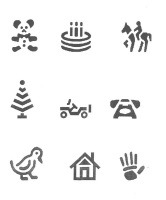
A Children's Eye Exam may include a picture chart like this one to the right. If your child is too young to read letters or numbers, but is old enough to speak, the picture chart will allow your child to identify the smallest row of pictures he or she can see. Younger patients can be tested with other methods, depending on the availability of tests at a particular office. Such methods include: 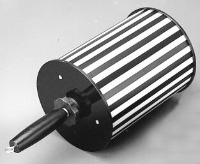
If your baby has good vision, he or she will prefer to look at the one with the pattern. The way your eye doctor will measure the vision is by making the pattern of lines closer and closer together. When the baby looks at both cards equally, it is presumed that he or she does not see a difference between the cards. 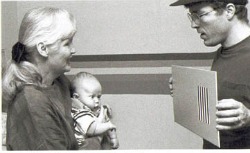
The next step in your Childrens Eye Exam will be to conduct an Eye Refraction Exam on his or her eyes. Your eye doctor will determine if your child has any of the following conditions during this portion of the exam:
The refractive error is most commonly found with a large piece of equipment called the phoropter, where your child will look through and have different lenses shown to him or her in order to compare the vision. For unresponsive children, your eye doctor may only use objective testing to figure out the refraction. In other words, your child won’t have to tell the eye doctor which is clearer to see through. A Childrens Eye Exam will include multiple tests to check your child’s Binocular Vision. Binocular Vision is important to depth perception. Your eye doctor will observe if either eye turns in, in which case your child may have Crossed Eyes, or turns out, in which case your child may have a “Wall-Eye.” Also, your eye doctor may do depth perception tests to see if your child can see in three-dimension. One common test is called the Stereo Fly photographed below:
Your eye doctor may also conduct color vision testing, especially if a Color Deficiency is suspected. Here again, your child has to be mature enough to differentiate colors and be able to identify them. The final part of the Childrens Eye Exam includes a complete check of the eyeball, both outside and inside for any Eye Diseases. The eye doctor will use a Slit Lamp, which serves as a microscope for the eye doctor to observe the structures of the eye under high magnification. Your eyes may have his pupils dilated, especially if he or she has a prescription for glasses, in order for the eye doctor to get a better look at the Retina and other internal structures of the eye. |





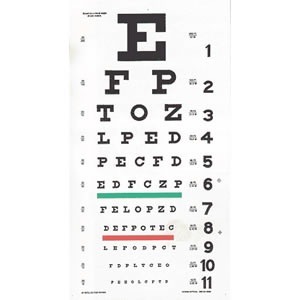 A Childrens Eye Exam will then include measuring or determining your child’s entering vision, or Visual Acuity. If your child knows his or her letters and/or numbers, the test is straightforward with the use of an Eye Test Chart.
Your child will be asked to read the smallest line of letters that he or she can identify. Typically, reading the bottom line of the chart means 20/20 Vision, which is the standard eye doctors use for good vision. It is possible to see even better than 20/20.
A Childrens Eye Exam will then include measuring or determining your child’s entering vision, or Visual Acuity. If your child knows his or her letters and/or numbers, the test is straightforward with the use of an Eye Test Chart.
Your child will be asked to read the smallest line of letters that he or she can identify. Typically, reading the bottom line of the chart means 20/20 Vision, which is the standard eye doctors use for good vision. It is possible to see even better than 20/20.
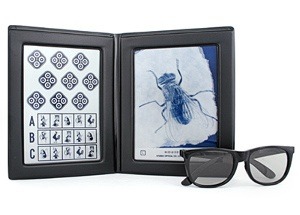 Your eye doctor will have your child wear the polarized glasses shown above and ask him or her if the fly looks like it is coming up off the page.
Your eye doctor will have your child wear the polarized glasses shown above and ask him or her if the fly looks like it is coming up off the page.